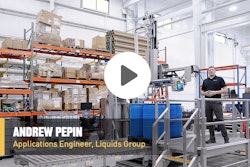The Association of Plastic Recyclers (APR), the international trade organization representing the plastics recycling industry, has responded to claims by plastic can manufacturers that their products are recyclable, pointing out that a PET can with a metal lid contaminates the PET recycling stream. APR urges caution to those companies considering the use of plastic cans.
“There is a reason Maine, Illinois, and Minnesota imposed restrictions or bans on this type of packaging,” says Steve Alexander, Executive Director of APR. “A plastic can with a metal lid is a contaminant to PET recycling and not compatible with today’s material recovery and plastics reclamation systems.”
The state restrictions were imposed in response to production of plastic cans in the 1980s and their negative impact on the recycling process. These laws remain in effect today, and have led many companies to withdraw support of this type of container.
Although the PET portion of the can may be recyclable, the metal lid is seamed onto the PET.There are no practical solutions to separate the two materials in material recovery facilities (MRFs), rendering the entire container non-recyclable.
“APR has already reached out to companies producing plastic cans to voice the concerns of the plastic recycling industry,” says Byron Geiger, President of Custom Polymers PET and Chairman of the APR PET Technical Committee. “Brand companies consistently require suppliers to provide evidence of compatibility with recycling.The APR works with companies to ensure this is possible, and offered this support in communication with plastic can manufacturers.”
The APR has created laboratory test methods used to assess the impact of new innovations to the recycling market as an integral part of The APR Champions for Change® program. Companies use these tests to confirm their innovations do not interfere with recycling. Once testing requirements are met, those companies receive APR Critical Guidance Recognition. This process addresses the challenge of introducing packaging that is consistent with recycling technology, and the APR encourages plastic can producers’ participation.
Additional information about metal components or attachments on PET containers is detailed in The APR Design® Guide for Plastics Recyclability. With newly updated and expanded content, this comprehensive design resource outlines the plastics recycling industry’s recommendations in the marketplace today.The goal of the APR Design Guide is to have packaging designed that is compatible with the recycling infrastructure.
“As the Voice of Plastics Recycling®, APR strives to solve industry challenges,” says John Standish, APR Technical Director. “Because the plastic can is a significant contaminant to the plastic recycling stream, we encourage their producers to collaborate with APR to design packaging that is recyclable and sustainable.”


























